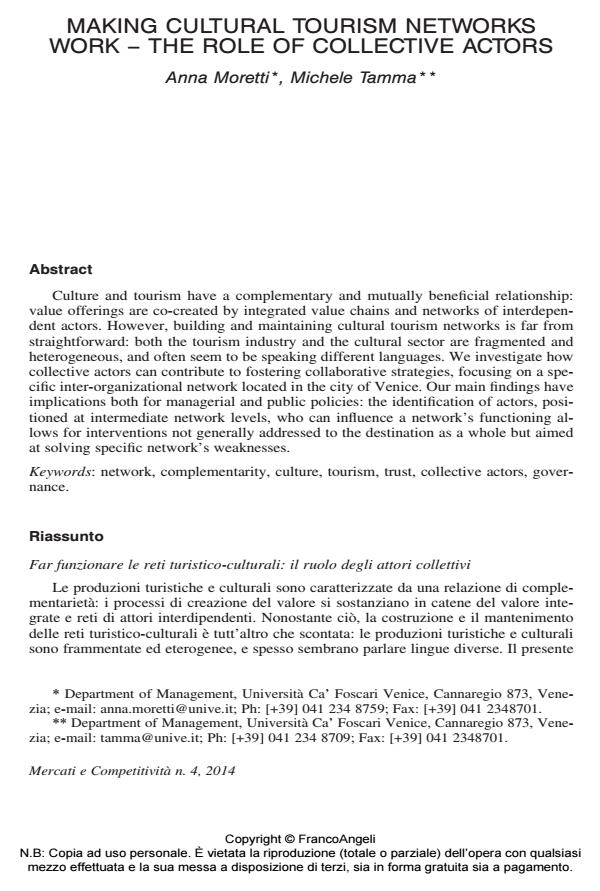Making cultural tourism networks work - the role of collective actors
Titolo Rivista MERCATI & COMPETITIVITÀ
Autori/Curatori Anna Moretti, Michele Tamma
Anno di pubblicazione 2014 Fascicolo 2014/4
Lingua Italiano Numero pagine 21 P. 63-83 Dimensione file 189 KB
DOI 10.3280/MC2014-004005
Il DOI è il codice a barre della proprietà intellettuale: per saperne di più
clicca qui
Qui sotto puoi vedere in anteprima la prima pagina di questo articolo.
Se questo articolo ti interessa, lo puoi acquistare (e scaricare in formato pdf) seguendo le facili indicazioni per acquistare il download credit. Acquista Download Credits per scaricare questo Articolo in formato PDF

FrancoAngeli è membro della Publishers International Linking Association, Inc (PILA)associazione indipendente e non profit per facilitare (attraverso i servizi tecnologici implementati da CrossRef.org) l’accesso degli studiosi ai contenuti digitali nelle pubblicazioni professionali e scientifiche
Culture and tourism have a complementary and mutually beneficial relationship: value offerings are co-created by integrated value chains and networks of interdependent actors. However, building and maintaining cultural tourism networks is far from straightforward: both the tourism industry and the cultural sector are fragmented and heterogeneous, and often seem to be speaking different languages. We investigate how collective actors can contribute to fostering collaborative strategies, focusing on a specific inter-organizational network located in the city of Venice. Our main findings have implications both for managerial and public policies: the identification of actors, positioned at intermediate network levels, who can influence a network’s functioning allows for interventions not generally addressed to the destination as a whole but aimed at solving specific network’s weaknesses.
Parole chiave:Rete, complementarietà, cultura, turismo, fiducia, attori collettivi, governance
- The Network Organization Anna Moretti, pp.119 (ISBN:978-3-319-52092-6)
- Ambidexterity of hospitality trade associations: a social capital perspective for destination coordination and cooperation dynamics Anna Moretti, Maria Martini Barzolai, Mariapia Cutugno, in Current Issues in Tourism /2024 pp.1
DOI: 10.1080/13683500.2024.2414929 - The Network Organization Anna Moretti, pp.89 (ISBN:978-3-319-52092-6)
Anna Moretti, Michele Tamma, Making cultural tourism networks work - the role of collective actors in "MERCATI & COMPETITIVITÀ" 4/2014, pp 63-83, DOI: 10.3280/MC2014-004005